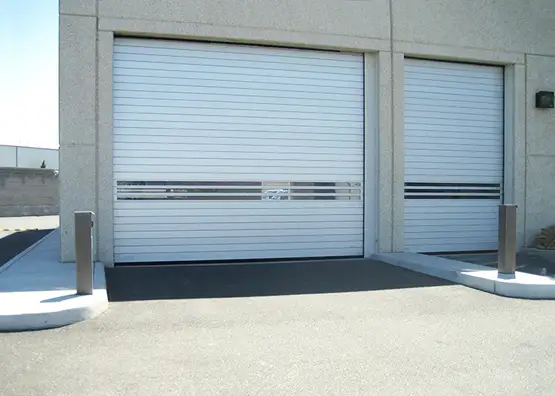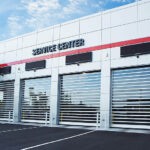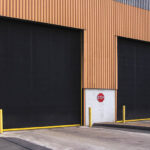 As the colder months approach, it’s time to get serious about prepping the high-performance doors in your facility. These doors are designed to handle the extreme conditions that come with winter weather. But a little pre-season prep can make all the difference in maintaining efficiency and comfort throughout the cold-weather months.
As the colder months approach, it’s time to get serious about prepping the high-performance doors in your facility. These doors are designed to handle the extreme conditions that come with winter weather. But a little pre-season prep can make all the difference in maintaining efficiency and comfort throughout the cold-weather months.
Here’s how to prepare your high-performance doors to keep the winter chill at bay and your facility running smoothly.
Inspect Components
Now is the time to perform a thorough inspection and maintenance check on your high-performance doors – before the cold weather sets in. Take the time to review all mechanical parts of the door, including motors, mounting hardware and the gearbox, to ensure each component is working properly. This will let you address any issues now, so you don’t have to deal with repairs during the peak of winter.
- Run doors through several open and closed cycles and listen for any unusual noises.
- Ensure all mounting hardware, including nuts, bolts, set screws, anchors and bearing blocks, are secure.
- Make sure the gearbox is properly lubricated. You can check oil levels at the plug located on the lower section of the gearbox.
Make Sure Doors Close Tight
High-performance doors are fast, with speeds up to 100 inches per second. This minimizes the amount of time that the interior of the building is exposed to the outside elements. But these speeds aren’t possible if the doors can’t open and close properly.
- Test each door to ensure it closes quickly and completely. Any gaps or delays can let cold air seep into your facility, impacting heating efficiency.
- Make sure the doors seal tightly against the frame.
Inspect and Maintain All Seals
Specially designed seals on the sides and bottom of high-performance doors form a tight enclosure when the door is closed. This protects against cold weather and helps prevent frost and ice build-up around doorways. Effective seals also save you money by ensuring that your building’s HVAC system doesn’t have to work as hard to maintain the building at a constant, comfortable temperature.
- Regularly inspect the seals on the sides and bottom of your doors for damage or wear. Properly functioning seals are essential for blocking cold air and preventing frost or ice build-up.
- Replace or repair damaged or missing seals to maintain energy efficiency and prevent drafts.
Test Safety Devices
High-performance doors have both standard and optional safety systems that keep people and equipment safe in your building.
- Check that any reversing edges function correctly. Tap the bottom of the edge while the door closes to ensure it immediately reverses.
- Test any safety systems, such as Rytec’s SmartSurround® system, to confirm they work properly and provide the appropriate alerts.
Make Sure You Have the Right Doors
High-performance doors can be manufactured with energy-efficient materials, such as insulated panels with a high R-value. This thermal feature helps minimize energy loss when the doors are closed – which is useful throughout your facility in winter. It’s important that you select the right doors for the specific applications in your building. If you’re unsure about the type of door you need, let us help you choose the best options for your facility.
A little preparation goes a long way in maintaining comfort and efficiency in your building. By taking these steps now, you’ll help ensure that your high-performance doors continue to perform effectively throughout the winter.
Stay Ahead of Winter’s Chill
Ready to upgrade or need more tips on winter preparation? Contact us today to discuss your needs and make sure you’re fully prepared for the cold season ahead.




